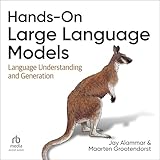

TL;DR:
Writing effective prompts is crucial for getting the best output from machine learning models. To design a good prompt, you should guide the model by including a clear task description and examples. It’s important to try multiple formulations of the same prompt and provide enough context to the model. Additionally, choosing the right temperature can have a big influence on generation quality. By following these principles, you can create well-designed prompts that guide the model to generate accurate and relevant output.
Disclaimer: This post has been created automatically using generative AI. Including DALL-E, and OpenAI. Please take its contents with a grain of salt. For feedback on how we can improve, please email us
What is Prompt Engineering?
Prompt engineering is a concept in the field of artificial intelligence, specifically in natural language processing (NLP). It involves embedding the description of a task in the input, usually in the form of a question, rather than it being implicitly given. This is achieved by converting one or more tasks to a prompt-based dataset and training a language model with “prompt-based learning”. This approach optimizes the representation of the prompt only, and may use techniques like “prefix-tuning” or “prompt tuning”. The GPT-2 and GPT-3 language models were significant milestones in the development of prompt engineering.
In 2021, multitask prompt engineering was shown to perform well on new tasks when using multiple NLP datasets. A chain of thought in few-shot learning examples shows better indication of reasoning in language models. For multi-step reasoning problems, text prepended to the prompt (like “Let’s think step by step”) may improve the performance of a language model in zero-shot learning.
Prompt engineering has become more accessible due to the publication of open-source notebooks and community-led projects for image synthesis. In February 2022, there were over 2,000 public prompts for about 170 datasets available for handling prompts. Recently, prompt engineering has also been used to generate images from text prompts with the release of machine learning models like Cohere, DALL-E 2, Stable Diffusion, and Midjourney.
Why is Prompting Important?
Prompting is essential for effective communication between humans and AI. By providing a specific prompt, we can guide the model to generate output that is relevant and coherent in context. This approach allows users to interpret the generated text in a more meaningful way. Prompting also enables the determination of what good and bad outcomes should look like by incorporating the goal into the prompt.
Different LLMs respond differently to the same prompting, so understanding the specific model is critical to generating precise results. Moreover, prompting allows for experimentation with diverse types of data and different ways of presenting that data to the language model. Prompting improves the safety of the model and helps defend against prompt hacking, where users send prompts to produce undesired behaviors from the model.
Challenges and Safety Concerns with Prompting
While prompting enables efficient utilization of generative AI, its correct usage for optimal output faces various challenges and brings several security concerns to the forefront. Achieving the desired results on the first try, finding an appropriate starting point for a prompt, and controlling the level of creativity or novelty of the result are some of the challenges in prompt engineering. Additionally, security vulnerabilities such as prompt injection, leaking sensitive information, and generating fake or misleading information are concerns.
Principles to Write Effective Prompts
Let’s talk about writing effective prompts for machine learning models. In the field of machine learning, prompts are inputs that guide the model to generate outputs. Choosing the right prompt is crucial for getting the best generations for your task. Here, we’ll discuss a few principles and techniques for designing prompts that work well for different tasks.
The first principle to keep in mind while designing prompts is that a good prompt should guide the model to generate useful output. For example, if you want a summary of an article, your prompt should include both the text you want summarized and a clear task description. By providing a well-designed prompt, you can guide the model to generate the desired output.
The second principle is to try multiple formulations of your prompt to get the best generations. When using the generate function, it’s useful to try a range of different prompts for the problem you are trying to solve. Different formulations of the same prompt can lead to generations that are quite different from each other. It’s important to keep in mind that our models have learned that different formulations are used in very different contexts and for different purposes. So, if one formulation doesn’t lead to a good generation, you can try different versions of the same prompt until you get the desired output.
The third principle is to describe the task and the general setting. It’s often useful to include additional components of the task description that come after the input text we’re trying to process. Providing the model with enough context helps to generate more accurate output. For instance, in the case of customer service, it’s important to give a clear description of the general setting and to specify who is responding to the customer.
Adding examples to a prompt is also a key way to achieve good generations. Examples demonstrate to the model the type of output we target. Examples should include both an example input and the output we want the model to emulate. By providing examples, you can guide the model to generate more accurate and relevant output.
In addition, choosing the right temperature can have a big influence on generation quality. The temperature is a hyperparameter that controls the randomness of the model’s output. If you want the model to be more creative, you can increase the temperature. However, if you want more accurate output, you can lower the temperature.
Final Thoughts
Prompt engineering is an essential skill that helps users optimize their interaction with LLMs, ensuring relevant and coherent results. While prompt engineering has challenges and safety concerns, it remains an essential technique in generative AI. As AI, machine learning, and LLMs become increasingly integrated into everyday tasks, prompt engineering could become a key skill and a common standalone job title.
Discover the full story originally published on Cohere. Take the course and Learn Prompt Engineering.
Join me on this incredible generative AI journey and be a part of the revolution. Stay tuned for updates and insights on generative AI by following me on Twitter, Linkedin or my website. Your support is truly appreciated!
Book recommendations
Building LLM Powered Applications





